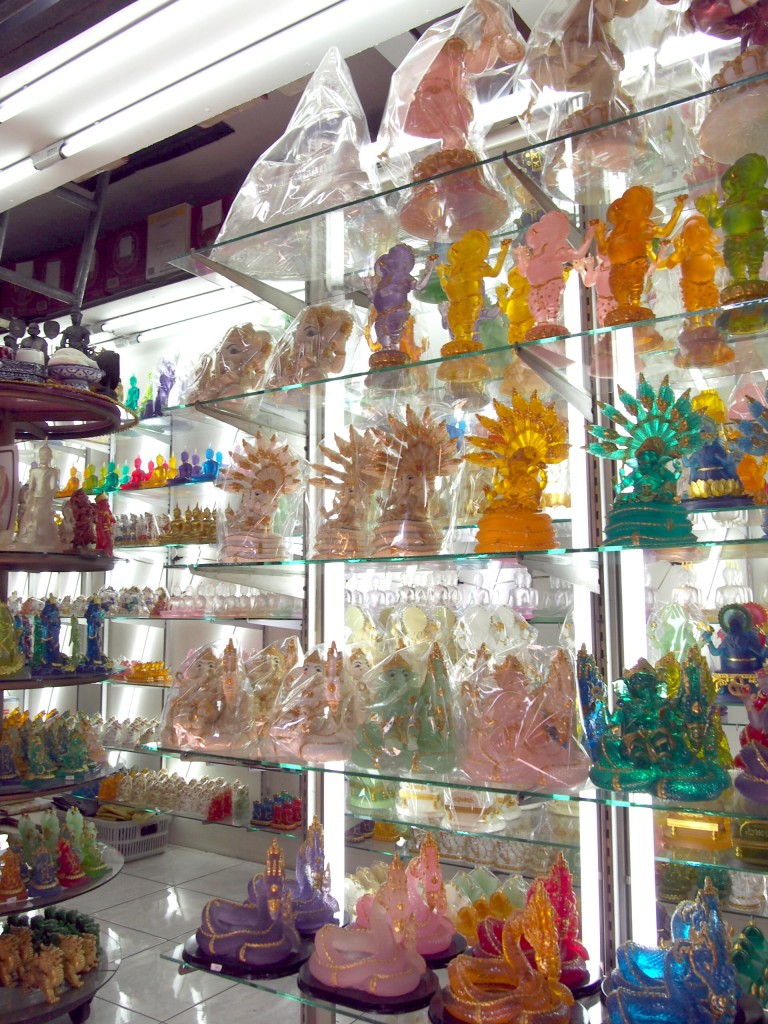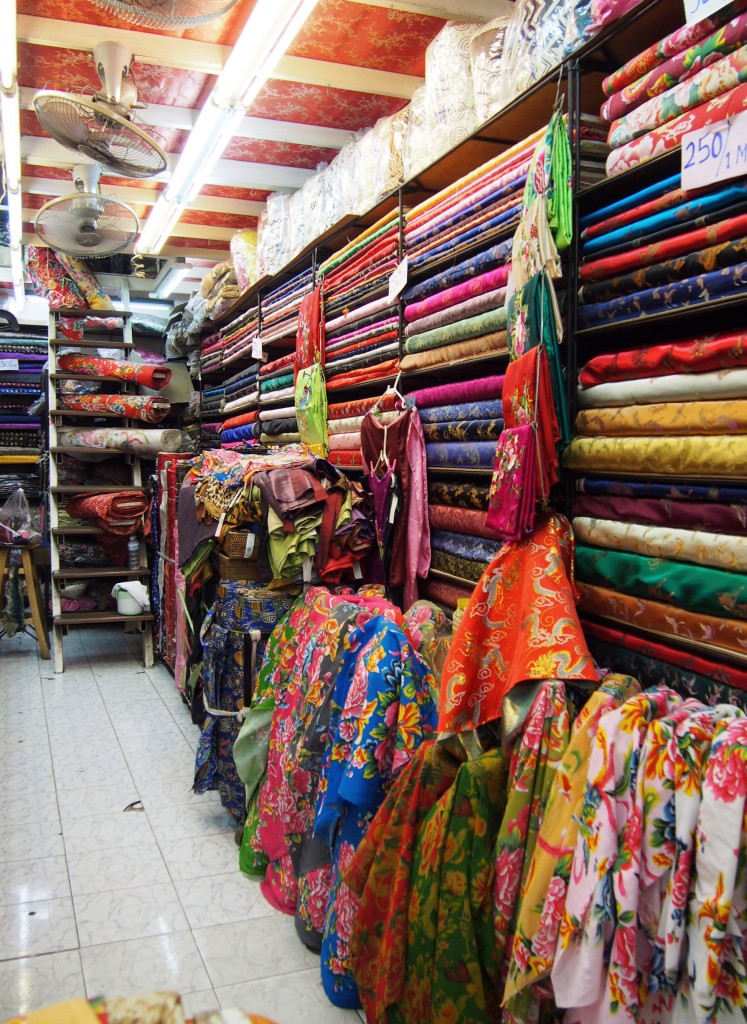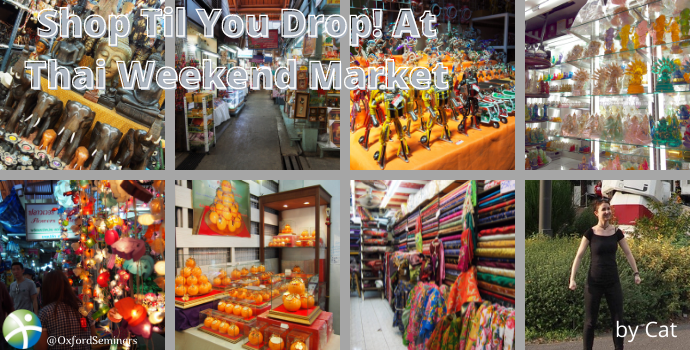
When I got the chance to teach English in Japan through the JET Programme, I knew I wanted to take the opportunity to travel and explore the country as much as possible. One of the biggest draws of teaching abroad for me was the idea of seeing as much of Japan – its castles, shrines, and mountainous landscapes – as I could. But I soon realized I had another opportunity as well: there would never be a better time to explore the rest of Asia! With Japan as my “home base,” I started thinking of all the other places I wanted to see while living on the other side of the world. And the first stop on my list…Thailand.

Typically, I like to plan my vacations down to the letter. I like to know exactly where I’m going, what I’m doing, and what to expect along the way. But it didn’t seem right to do so in a relaxing tropical paradise like Thailand. If I were to truly become a globe-trotting explorer, I had to learn to go with the flow and see where the adventure would take me. Luckily, I had two traveling companions with me (fellow teachers abroad, each with their own schedules packed to the gills), so I decided to let myself relax and be swept along for once. Looking back, I’m glad I did. Relaxing days on the beach were certainly on the schedule for later, but we hit the ground running right in the heart of Bangkok on our first day, and I would surely have been overwhelmed trying to do it any other way. Time to channel some Zen.

Thai culture is a vibrant blend of old and new, and nowhere is this more evident than in the country’s largest market, Chatuchak Weekend Market. With a whopping 15,000 stalls, the sprawling Bangkok market brings in over 200,000 visitors every week. In the hot, humid summer of 2015, that number included three wide-eyed Canadians stepping off the plane from Japan. Admittedly, our experience with North American flea markets and sidewalk sales had not prepared us for Chatuchak. Even after arriving at one of the market’s many entrances, it was hard to visualize its sprawling size – an incredible 35 acres. The walkways between stalls are numbered on large, hanging signs to help shoppers navigate the 26 sections, but if you’re only visiting, it’s unlikely you’ll ever end up crossing the same one twice.

You may start to notice some themes amongst the items for sale: elephants are a common motif, being the national animal of Thailand. Buying a wooden carving or a t-shirt of one is a great way to enjoy these iconic giants without engaging in potentially harmful elephant tourism. Thailand is also a Buddhist nation, and you’ll see happy, Thai-style Buddhas everywhere you look.

Shoppers at Chatuchak are expected to haggle, which doesn’t exactly come easy to a bunch of overly-polite Canadians. Luckily, a Thai phrasebook app helped us along considerably. Once we had learned to say “hello” (sa wat dee) and “thank you” (kop kun), it was easy to engage with the friendly locals. Throwing in a wai (Thai-style bow) will usually get a few smiles, too. I’m still not sure I can actually barter, but at least I was polite when I did it badly! The three of us had nearly checked off everything on our souvenir shopping lists, and I was finally starting to feel like I could allow myself to completely wing it on vacation without worrying where the path ahead would take me…

…But just when you think you’ve figured out Chatuchak Market, you turn a corner and find homemade Transformers. Or a bridal shop. Or a stall selling nothing but colorful rubber ducks. It’s almost easier to go in without any specific idea of what you’d like to buy, and just let the colors and textures of the market pull you along. Every time you think you’re done shopping, you run into something else that is so weird you have to have it. Or, at the very least, snap a picture of it.

The Market isn’t just for tourists buying souvenirs, though. Its 26 sections include art, antiques, home decor, and even raw materials you can buy in bulk. Courier services are offered on-site for items large enough to be shipped home directly. If you come here on a schedule and ignore all the strange little detours, you’re missing out — the Market’s website says it takes 3 hours to “briefly sweep” the market, and recommends giving yourself at least 5 hours to wander. It might sound like a long time to be on your feet, but it is completely worth it when you find a shop that makes you stop and laugh.

Locals shop here, too, and you’ll encounter “real” Thai culture as much as the spruced-up tourist version. On the other hand, you’re just as likely to find the symbols of neighboring cultures, too. Buddha figurines share shelf space with colorful Hindu deities, reflecting the mix of tourists and natives in the crowd of shoppers.

One of the easiest places to compare old and new culture in Thailand is the fashions for sale at Chatuchak. Beautifully dyed textiles, handmade bags, and brightly-patterned harem pants (a must-buy for the tourist who only packed jeans) neighbor up against stalls of the latest fashions worn by Thai teens.

We ended up buying a few shirts printed with tourist-y imagery (hello again, elephants) after being sold on a 3-for-1 deal by an enthusiastic and very persuasive shop girl. I can’t complain, though, as the impulse purchase ended up featuring in the few pictures I have of myself in Thailand. Though I’m not much for selfies, I do enjoy being thematically appropriate with my wardrobe.

Whatever you came looking for at Chatuchak Market, chances are you won’t walk away empty-handed. And don’t forget to treat yourself! Walking through bustling crowds in the Thai heat and humidity works up a sweat, and it’s important to stay hydrated. Outside the Market, we spent a considerable amount of our food budget on sports drinks, thanks to the handy 7-11s on every corner. But being a tropical nation, you will also encounter fresh flavors like coconut, mango, dragonfruit, and durian (if you’re brave) everywhere you go, often for only a few baht. Before you leave Chatuchak, be sure to snap up a freshly-blended, ice cold fruit smoothie — or, you know, whatever you happen to find. Go with the flow.

 Cat Tompkins tutored ESL students while earning their BA in English and a TESOL certification at CSU, Chico. After graduating, they taught English in Japan through the JET Programme for three years. They are currently a proud member of Oxford Seminars’ Job Placement team, and love to get pictures of pets from our grads.
Cat Tompkins tutored ESL students while earning their BA in English and a TESOL certification at CSU, Chico. After graduating, they taught English in Japan through the JET Programme for three years. They are currently a proud member of Oxford Seminars’ Job Placement team, and love to get pictures of pets from our grads.



 Oxford Seminars Blog
Oxford Seminars Blog 



